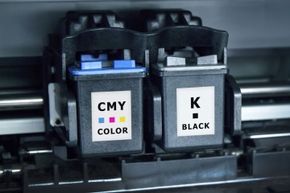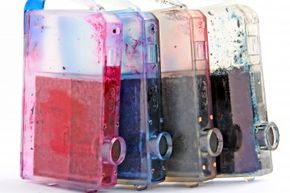Inkjet printer ink is crazy expensive. Depending on the make and model of your printer, you could easily drop $100 or more for a new round of cartridges – all so that you can continue using a printer that may have only cost you $89. So when you want to maximize the number of printouts you make with that pricey ink, you may find yourself wondering exactly how the printer knows each cartridge is about to run dry.
Before we delve into specifics, it's worth knowing that manufacturers purposely program their printers to stop using cartridges that are getting low on ink. That's because if cartridges were to run totally dry, the plastic cartridge may become too hot and eventually damage or destroy your printer's printhead. In other words, you'd be out a printer instead of just ink.
Advertisement
That said, considering the price of ink, you have a vested interest in squeezing every last drop of the stuff out of each cartridge. Ink may cost anywhere from $13 to $75 for a single ounce. That's -- cough -- nearly $10,000 per gallon [source: Consumer Reports].
Ink is exorbitantly priced in part because printer manufacturers are giving away their sophisticated printers at a really low price in the short term, knowing that they'll make their real profits on ink in the long term.
All of which leads us to this: If ink is such a fabulous cash cow for printer developers, they'd clearly have a reason to fudge on low-ink reminders. After all, if you unknowingly replace cartridges when they still have a usable level of ink inside them, the companies that sell the ink will wind up with significantly higher revenues.
But these companies aren't necessarily out to get you. On the next page you'll read more about low-ink reminders and how you can monitor whether you're getting your money's worth.
Advertisement

